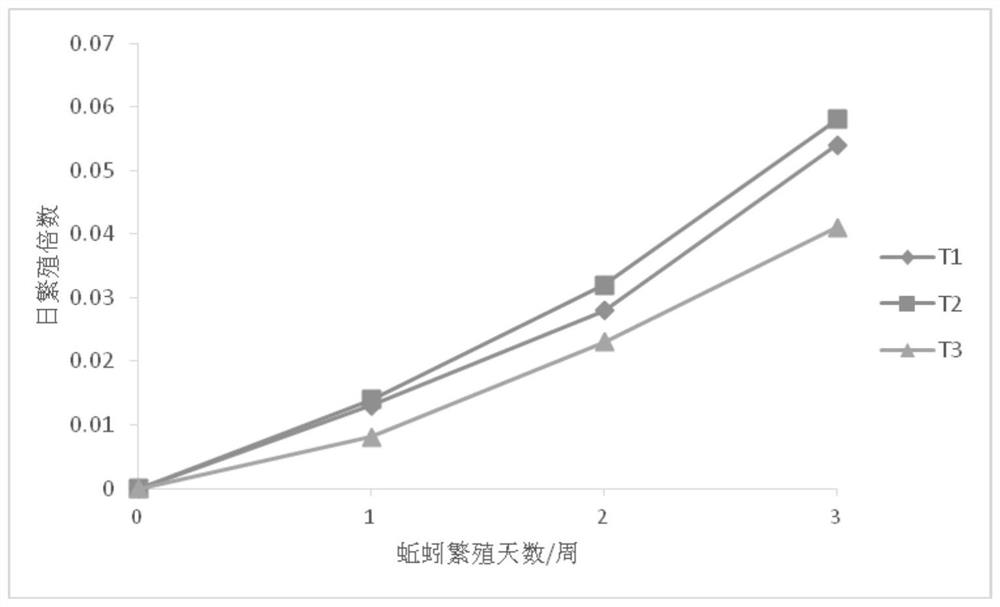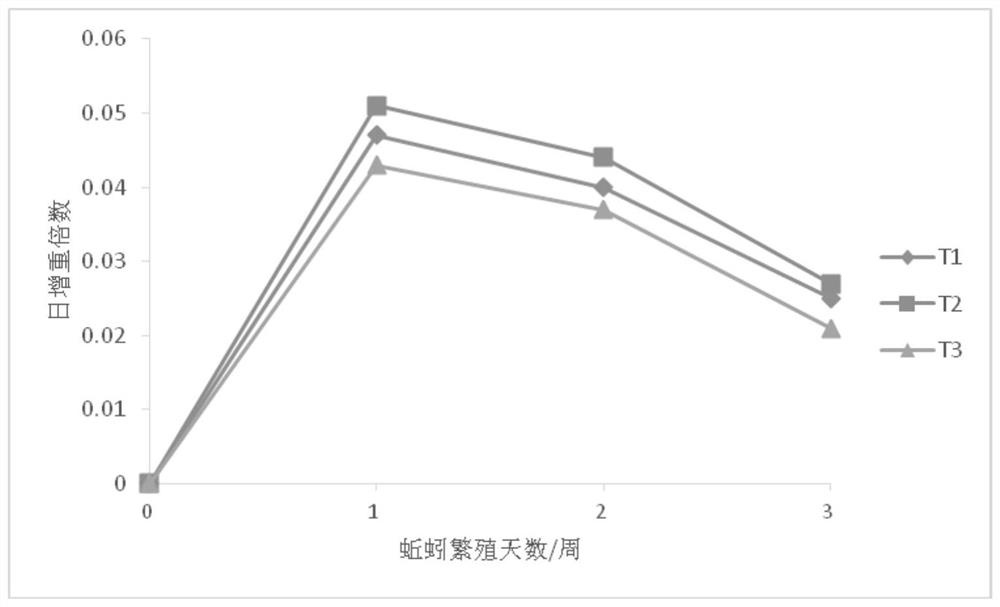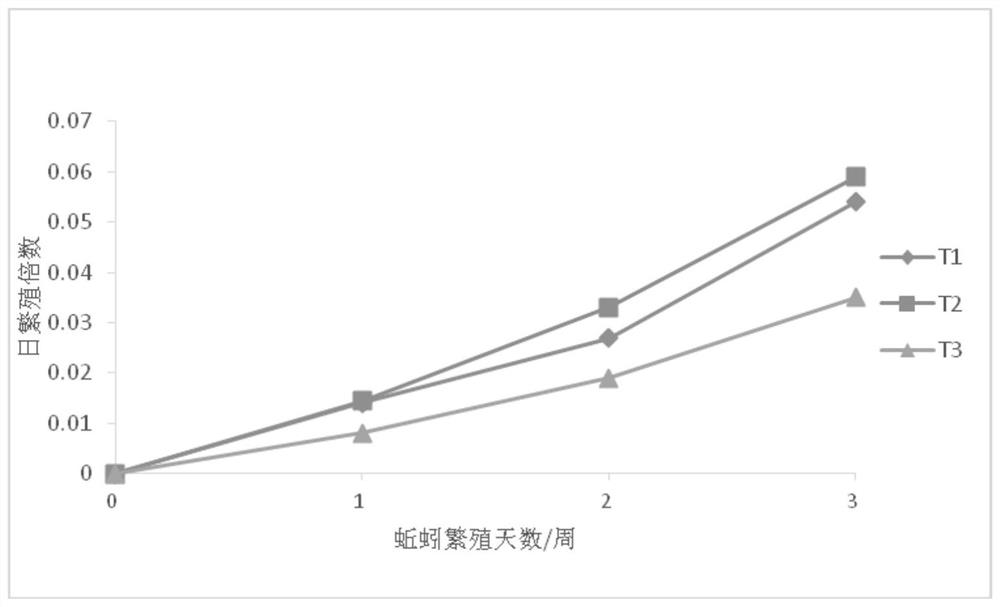Method for breeding wild red earthworms in northern cold regions by using domestic kitchen garbage
A technology for kitchen waste and red earthworms is applied to the breeding field of wild red earthworms in cold regions. Diversity, environmental protection, practical and effective, and the effect of maintaining soil fertility
- Summary
- Abstract
- Description
- Claims
- Application Information
AI Technical Summary
Problems solved by technology
Method used
Image
Examples
Embodiment 1
[0082] Screening of the height of the worm box. The height of the worm box determines the thickness of the base material. The height of the worm box is 15cm, 20cm and 30cm. The earthworms raised in the present invention are mainly surface-dwelling red earthworms distributed in the 7-20cm soil layer. If there is too little base material, there are few earthworms to be fed, and it is easy to lose water and dry out, which will affect the growth and reproduction of earthworms and the breeding efficiency is also low, so the base material thickness less than 8cm is not within the screening range. According to breeding experience, the temperature is controlled at 20-25°C, the humidity is controlled at 55-60%, 0.8kg of earthworms are inoculated per square meter, and the weight of a single worm is 180-250mg. The base material is fermented kitchen waste, and the thickness of the base material is divided into three parts. The grades 10-15cm, 15-20cm, and 20-30cm are represented by T1, T2...
Embodiment 2
[0087] The thickness of the base material is 10-15cm, and the screening of the total weight of inoculated earthworms per square meter was carried out in the underground laboratory of the Heilongjiang Forestry Science Research Institute from January to December 2019. The earthworm species is wild red earthworm (the main species is Chiziai victory worm).
[0088] Worm box (size: 47cm×31cm×15cm), the thickness of the base material is controlled at 10cm, the temperature is controlled at 20-25°C, and the humidity is controlled at 55-60%. The base material is fermented domestic kitchen waste, according to the earthworm box Inoculate 0.5kg, 0.8kg, 1.1kg per square meter respectively, when the weight of a single worm is 180-250mg, study the effect of inoculation density on the growth and reproduction of earthworms, 3 weeks is a reproduction cycle. During the reproduction process of earthworms, the biomass of earthworms was investigated once a week, and the effect of inoculation density ...
Embodiment 3
[0100] The thickness of the base material is 10-15cm, and the effect of the ratio of adding fresh organic waste each time to the total weight of the initial inoculated red earthworm on the reproduction of wild red earthworm. Earthworm breeding box (specification: 47cm×31cm×15cm), the thickness of the base material is controlled at 10cm, the temperature is controlled at 20-25°C, the humidity is controlled at 55-60%, 0.8kg seed worms are inoculated per square meter, and the weight of a single worm is 180mg- At 250mg, study the digestion rate of adding fresh organic waste within 7 days. The base material is fermented kitchen waste. The effect on the growth and reproduction of earthworms. 3 weeks is a reproduction cycle.
[0101] Because the fresh organic waste will be corrupted and moldy after a long time is unfavorable to the growth and reproduction of earthworms, the present invention adopts a growth cycle (21 days to change the base material) and feeds the fresh organic waste t...
PUM
 Login to View More
Login to View More Abstract
Description
Claims
Application Information
 Login to View More
Login to View More - R&D
- Intellectual Property
- Life Sciences
- Materials
- Tech Scout
- Unparalleled Data Quality
- Higher Quality Content
- 60% Fewer Hallucinations
Browse by: Latest US Patents, China's latest patents, Technical Efficacy Thesaurus, Application Domain, Technology Topic, Popular Technical Reports.
© 2025 PatSnap. All rights reserved.Legal|Privacy policy|Modern Slavery Act Transparency Statement|Sitemap|About US| Contact US: help@patsnap.com



